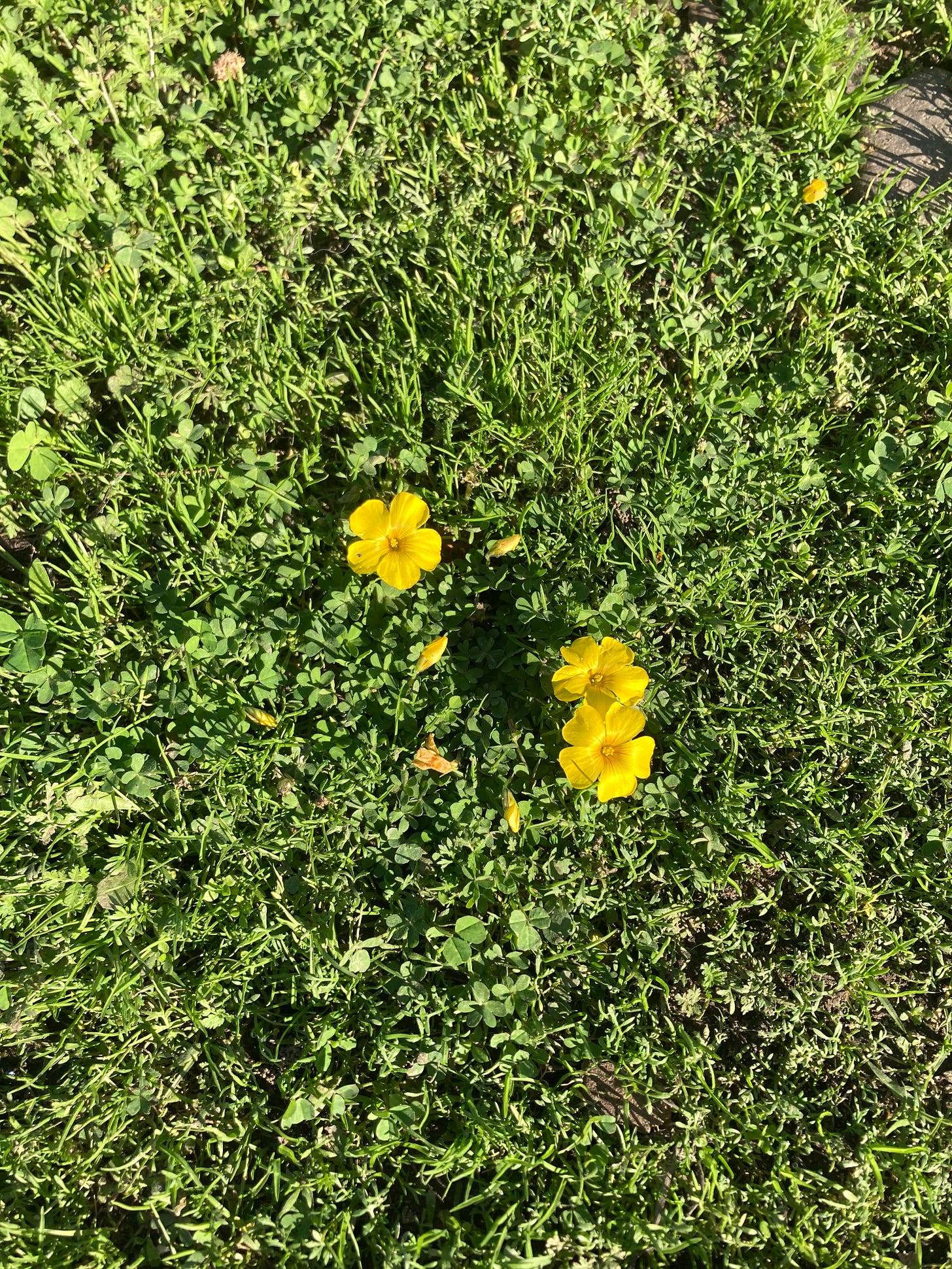This newsletter has English and Spanish versions. To choose which language you receive, visit your settings on Substack, find this newsletter under Subscriptions, and select the language(s) you want.
Leer en español aquí.
The first glimpse of electric, neon yellow in a sea of clovers makes my heart race. There are plenty of yellow flowers, but this one is unmistakable. Similarly, there is no shortage of sources of natural yellow (others I use frequently include pomegranate rinds, yellow onion skins, boldo, marigolds and eucalyptus leaves) but this one still calls to me even during the majority of the year when it’s unavailable.
This first glimpse seems like it’s happened early this year, seems like it’s happening earlier and earlier every year. We’ve had what feels like an above average rainfall this winter (above average at least for the new normal in Chile, which is the only normal I’ve ever experienced since arriving for the first time in 2012), and mostly mild temperatures. So perhaps the oxalis flowers are coming in early for natural reasons, maybe it’s a mild winter within normal variations, but it’s hard to shake that feeling, common these days even as we express relief at our surprisingly pleasant winters, that we shouldn’t be enjoying this, that it’s a sign of looming disaster. Spotting the flowers is a thrill but the worry is always present, that maybe I shouldn’t get to experience this in June, still early in winter.
Because of that sense of something being off, out of rhythm, I’ve mostly held off on foraging. I know I’ll have more opportunities later in the season. Seeing wildflowers at the beginning of winter makes them seem so fragile, blooming in all their vulnerability when perhaps it’s not yet their time. Maybe I’m wrong? It doesn’t get cold enough for frost here, and since I don’t have as much experience with this type of climate I can’t quite wrap my head around how these things work in a place with seasons but no frost.
On one of my walks I noticed this new-to-me variety of oxalis, low to the ground, smaller and more of a golden yellow than the typical oxalis variety here. I’ve only spotted it in a few places, so it doesn’t seem abundant, but there was enough of it that I was able to collect a tiny amount for color tests. I uploaded a photo to iNaturalist and learned it’s called flor de mayo, so perhaps my anxieties about its presence so early in winter are misplaced.
I collected a few of the more abundant oxalis pes-caprae variety as well, to compare the two yellow flowers. My color tests revealed that they both basically produce the same colors, yellow-oranges that become more intense with an alkali and soften to a sunshiney yellow with acid. The colors with flor de mayo are more intense, but unfortunately I was unable to control the variable of time due to unforeseen busyness so the flor de mayo color tests spent an extra day in the dye bath. I’ve gotten very saturated colors with oxalis before, and I probably won’t collect flor de mayo again, certainly not enough to dye full skeins, so the color tests were really for my own curiosity, rather than having a practical application to my wool dyeing.
I also made small amounts of lake pigment from the dye baths. I’ve been having trouble with my lake pigments lately, they’ve been turning green or brown as if modified with iron, and although I’m not able to have totally separate tools for iron only, I do clean thoroughly to prevent iron contamination where I don’t want it. I haven’t had this problem with yarn or any other textile, only with the pigments. I managed to keep these pigments yellow, although it’s a greener yellow than the dye bath, and I’m not sure why it’s so pale. Maybe too much alum? Or there just wasn’t much dye left in the bath? Or something in my tap water? I’m only just beginning to learn about lake pigments so these are questions I hope to investigate sometime in the future. By September I’ll have more oxalis to work with to try to answer some of these questions.
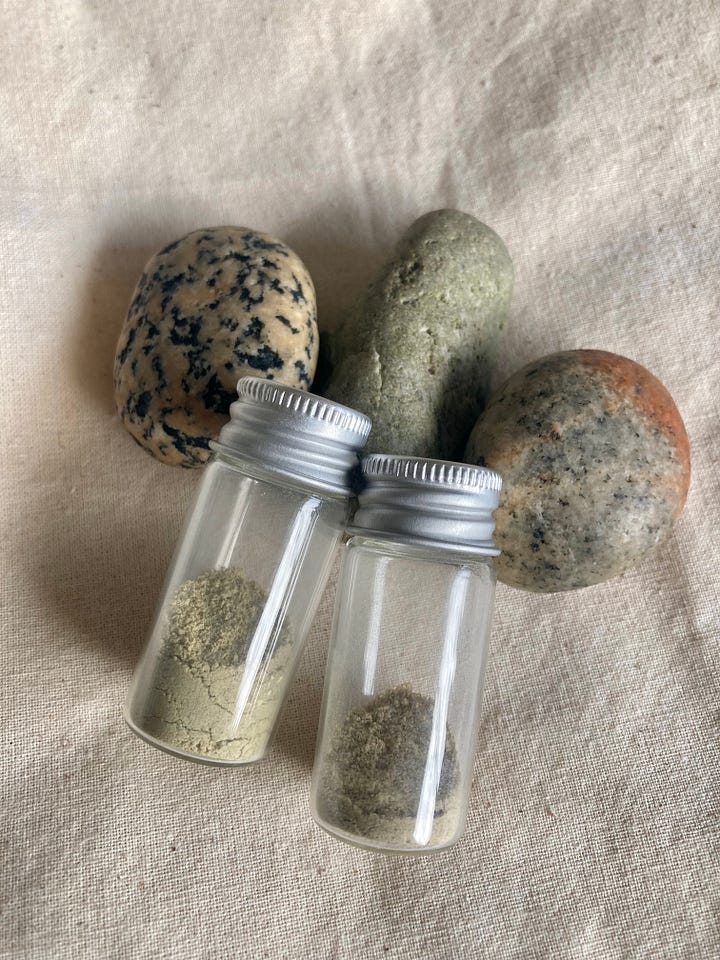
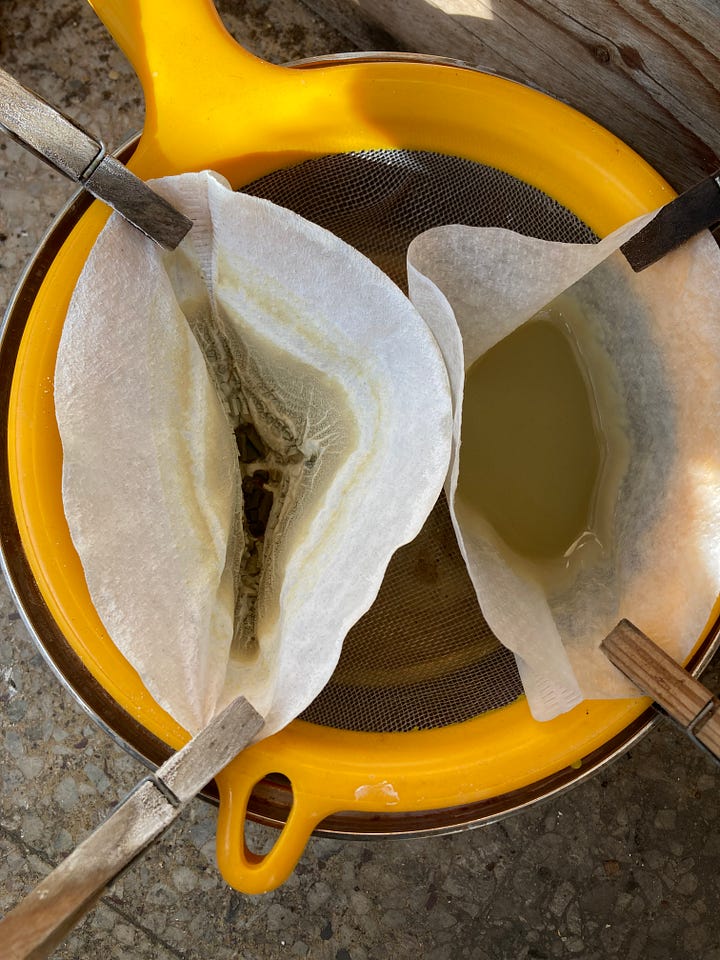
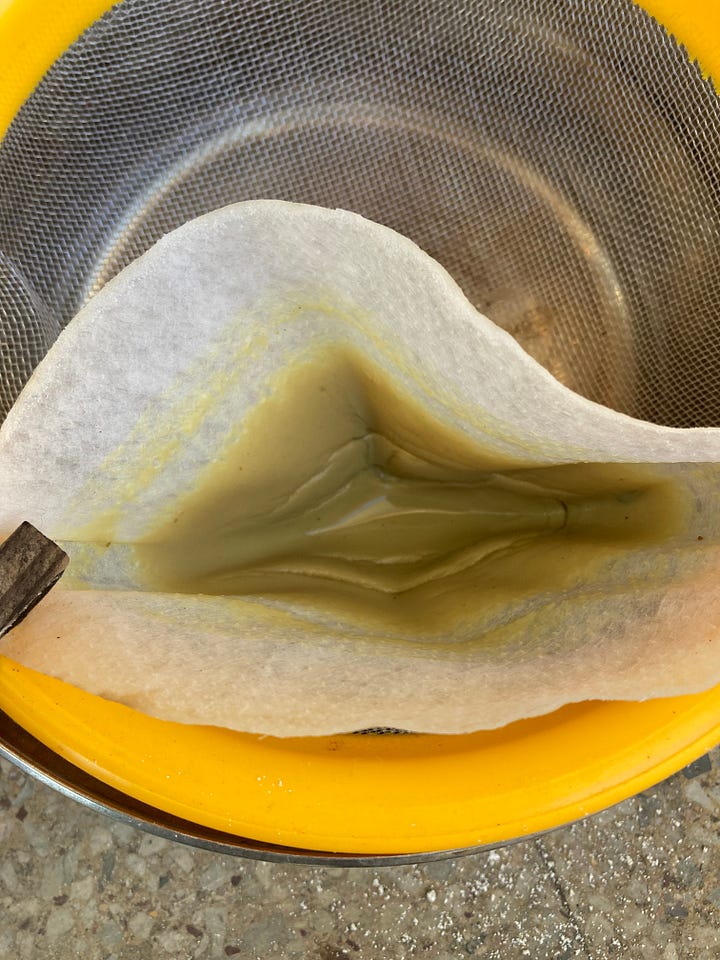
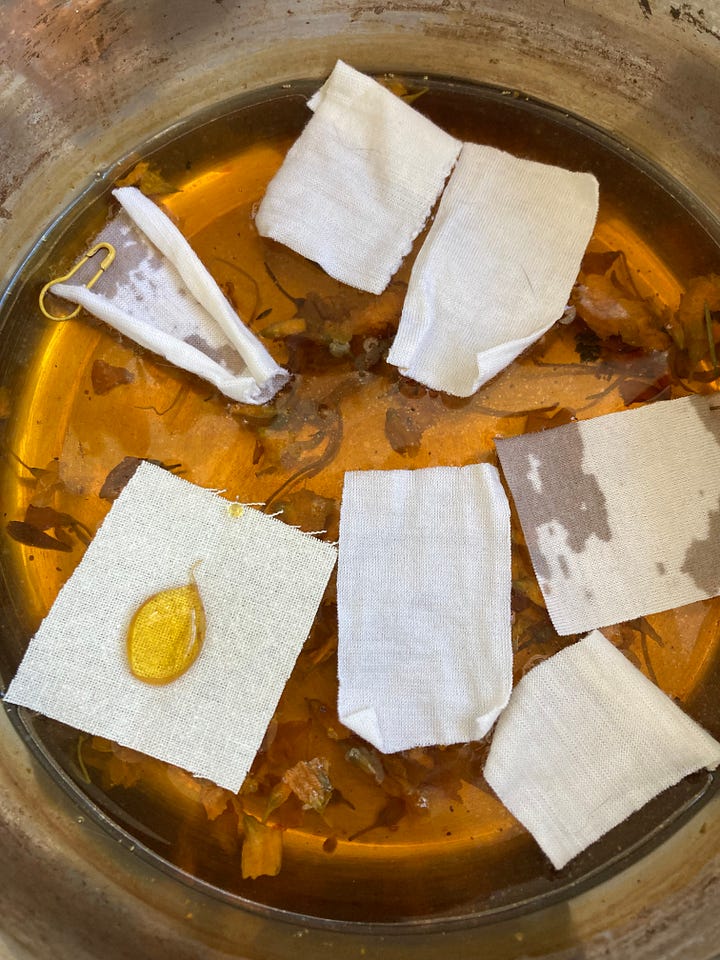
Upcoming events
It’s almost time for my Ohio workshops! I’m packing yarn now and making sure everything is ready to go before I leave, but there’s still time to sign up if you’re interested! Email neblina.wool@gmail.com for more information.
After my trip to Ohio, I’m hoping to have some springtime workshops back in Chile. When I have dates, I’ll announce them here and on Instagram.
Thanks for reading! If you enjoyed this newsletter, please consider subscribing or sharing it with a friend.





